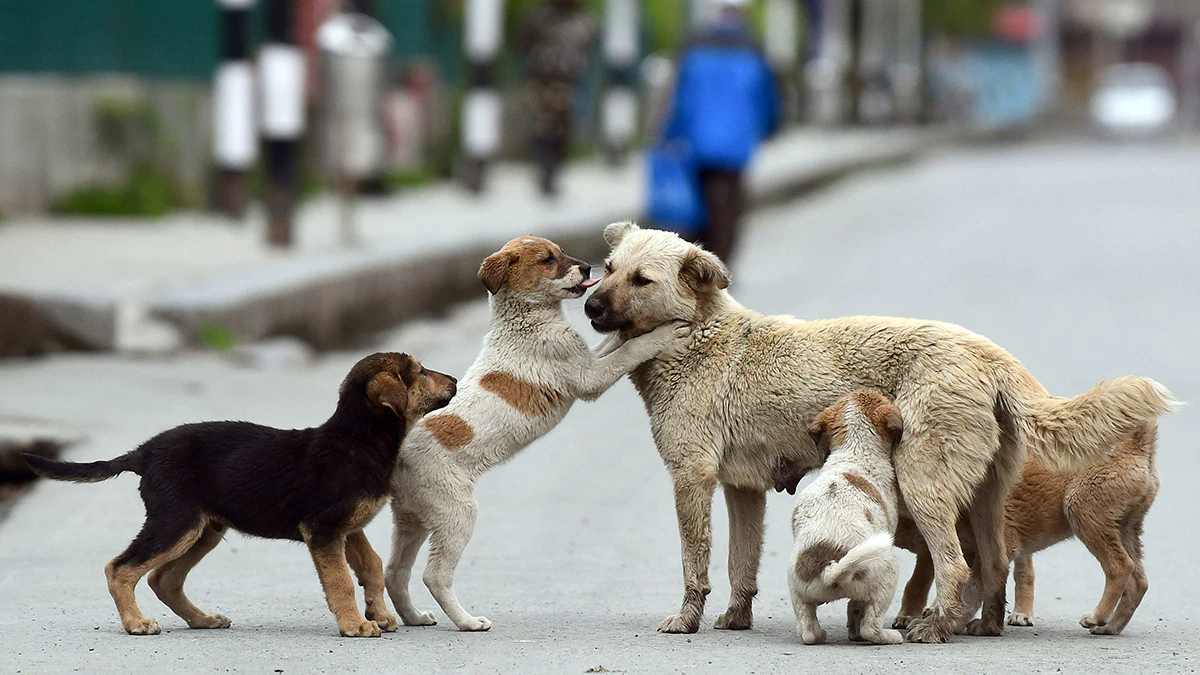
Street Dogs : Raising Concern in India
Introduction
Street dogs have become an integral part of the urban landscape in India, and their presence often sparks both sympathy and concern among the general public. These stray canines can be found in every nook and cranny of the country, from bustling metropolises to quiet suburban areas. While some people view them as a familiar sight and even feed them out of compassion, others express apprehensions about the health, safety, and social implications of having a large population of street dogs.
They often struggle to find food and clean water, leading to malnutrition and various health issues. There are 6.2 crore street dogs in India. It also leads in the no. of rabies cases with 18,000 to 20,000 deaths annually as per WHO and 1.6 crore cases of street dog bites (2019-2022).
For starters, India does not have effective systems in place for animal health care and control. This lack led to the unchecked breeding of strays, resulting in a massive population explosion. Moreover many people abandon their pets or allow them to run freely, contributing to the stray dog population.
Reasons for the Proliferation of Street Dogs
1. Lack of Effective Sterilisation Programs
One of the primary reasons for the overabundance of street dogs is the absence of comprehensive sterilisation and spaying programs. Uncontrolled breeding leads to a constant increase in the population, exacerbating the issue.
2. Inadequate Waste Management
The presence of waste and garbage in public spaces serves as a food source for street dogs. Poor waste management and open garbage disposal encourage their congregation in such areas.
3. Abandonment and Neglect
Many dogs are abandoned by their owners due to various reasons such as relocation, financial constraints, or inadequate understanding of pet responsibilities. These abandoned dogs often join the ranks of street dogs.
4. Lack of Animal Welfare Awareness
A general lack of awareness about responsible pet ownership and animal welfare perpetuates the problem. People might not realise the importance of vaccinations, spaying/neutering, and regular care for dogs.
Challenges Posed by Street Dogs
1. Public Health and Safety
Unvaccinated street dogs can carry diseases like rabies, posing a threat to public health. Incidents of dog bites and potential rabies transmission are major concerns, especially in densely populated areas.
2. Animal Cruelty and Welfare
Street dogs often face harsh living conditions, exposure to extreme weather, and inadequate food. Their vulnerability to abuse and neglect raises questions about animal welfare and ethical treatment.
3. Conflict with Humans
As street dogs scavenge for food, they might come into conflict with humans. Instances of dogs attacking pedestrians or other animals can lead to fear and negative interactions.
4. Negative Aesthetics
The presence of numerous street dogs roaming the streets can create an unclean and unsightly environment. This can affect tourism, overall city aesthetics, and residents' quality of life.
Potential Solutions
Addressing the street dog issue requires a multifaceted approach involving cooperation between governmental bodies, non-governmental organisations, and the public:
1. Comprehensive Sterilisation Programs
Implementing and promoting spaying and neutering initiatives can help control the population of street dogs and prevent uncontrolled breeding.
2. Effective Vaccination Campaigns
Regular vaccination drives can help prevent the spread of diseases like rabies and protect both dogs and humans.
3. Promoting Responsible Pet Ownership
Educational programs should be introduced to raise awareness about responsible pet ownership, encouraging people to adopt rather than buy pets, and to provide proper care.
4. Improved Waste Management
Proper waste disposal can reduce the availability of food sources for street dogs, discouraging their congregation in public spaces.
5. Animal Shelters and Adoption Programs
Establishing more animal shelters and adoption centres can provide a safer and healthier alternative for street dogs.
Conclusion
The issue of street dogs in India is a complex and pressing concern that affects public health, animal welfare, and social dynamics. While street dogs have become a familiar part of the Indian landscape, it is essential to address the challenges they pose through comprehensive approaches that combine sterilisation, vaccination, education, and improved urban planning. By fostering a society that respects the rights and well-being of both humans and animals, India can work towards a more harmonious coexistence with its street dog population.
Public Relationship Officer
8moStreet dogs are a concern in India. Raising awareness about responsible pet ownership and promoting the adoption of street dogs can make a significant difference. By working together we can ensure that these dogs receive the care and love they deserve. Let's strive for a society where all animals are treated with kindness and respect.
Public relationship officer
8moThe only creatures that are evolved enough to convey pure love are dogs and infants..
Vice President
8moTo survive, street dogs need to avoid conflict with humans. However, dog bites and dog attacks can occur when dogs are trying to seenfighting among themselves, and pedestrians and other humans in the vicinity may be bitten by fighting. Rabies is a major problem in some country.
Operations Manager
8moभारत में सड़क कुत्तों का मुद्दा जटिल है, जो पशु कल्याण, सार्वजनिक सुरक्षा और शहरी नियोजन के अंतर्संबंध को दर्शाता है।